We may receive a commission when you use our affiliate links. However, this does not impact our recommendations.
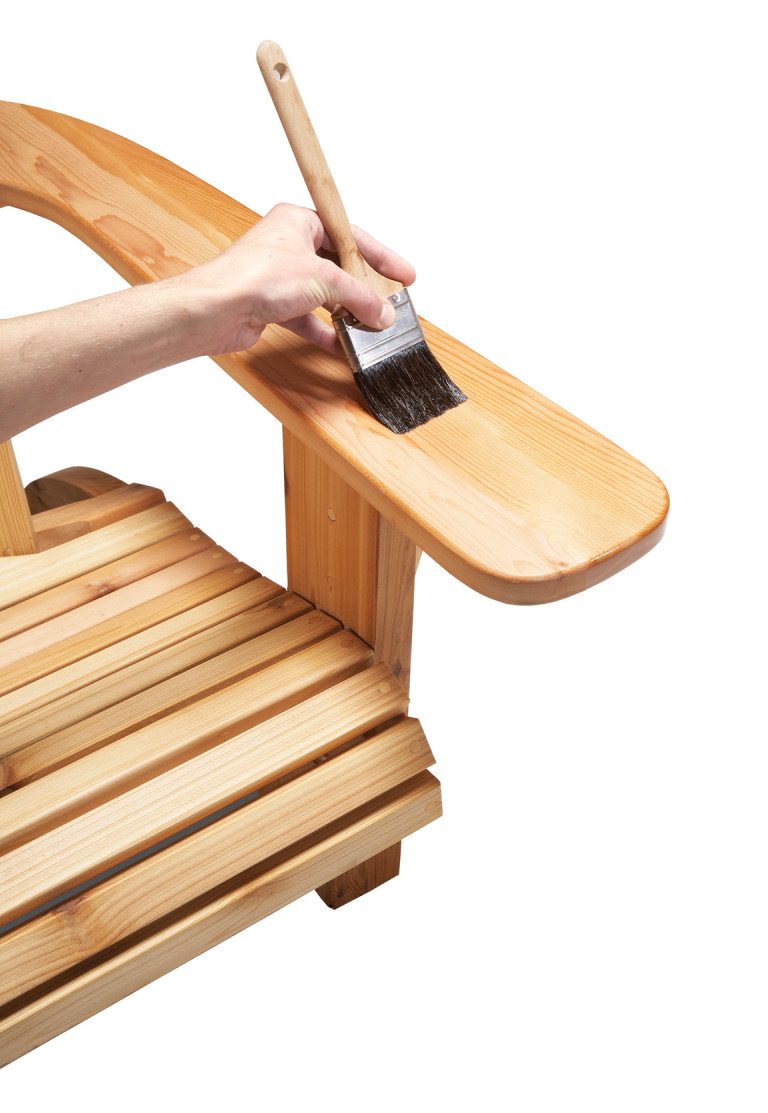
Easy to use and maintain, they keep outdoor wood furniture looking like new.
You’ve spent the winter building a set of cedar Adirondack chairs; or maybe you’ve purchased a teak garden bench. You love the look of natural wood and you want to keep it that way. Now you’re wondering what finish to use. I asked myself similar questions after completing a mahogany Craftsman-style outdoor chair. Initially, I planned to use exterior varnish, but without regular maintenance—sanding and re-varnishing every couple of years—varnish finishes crack, peel and end up looking awful. The thought of stripping and starting over made me cringe.
Oil Finish Virtues and Vises
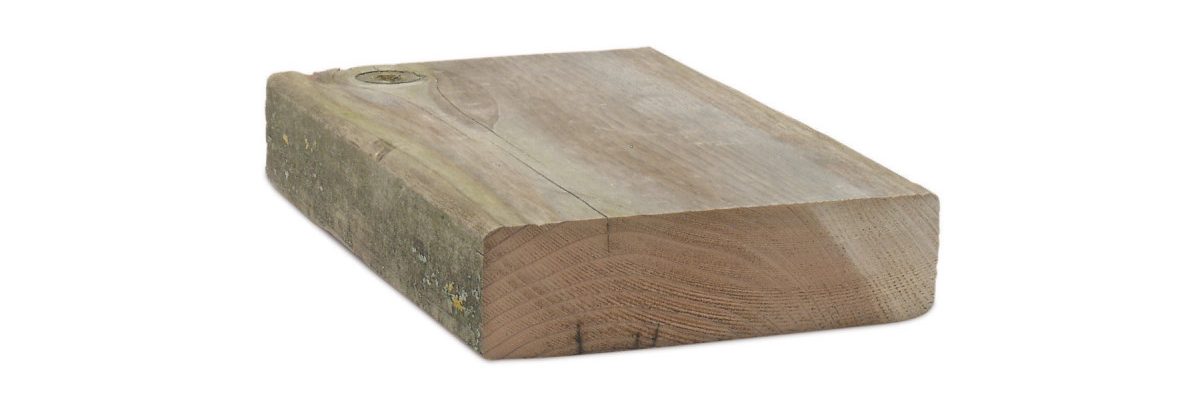
Water and sunlight are outdoor wood’s arch enemies. Exposure to water promotes mildew, causes cracks and checks and eventually leads to rot. Exposure to the sun’s ultraviolet light degrades the wood’s surface, causing it to turn gray.
Exterior oil finishes are a good alternative to exterior varnish. Exterior oils are very easy to apply—just brush or spray them on, let them soak into the wood and then wipe off the excess. Unlike varnish, exterior oils don’t form a film on the surface, so there’s nothing to crack or peel. Modern exterior oil finishes provide good water repellency. Most offer resistance to ultraviolet light (UV) and mildew.
On the other hand, exterior oil finishes must be reapplied as often, if not more often than film finishes. This can range from every couple of months to a couple of years. But since exterior oil finishes are so easy to apply, maintaining them is not difficult. Some exterior oil finishes should not be used on outdoor furniture, because they can rub off on clothing. When buying, double-check the product’s label, or ask your paint dealer to make sure it’s appropriate for furniture use.

Left to Right: Clear, Cedar-Toned, Cedar-Colored Semi-Transparent, Cedar-Colored Opaque. Exterior oil finishes are available in clear, toned, semi-transparent and opaque formulations, depending on how much pigment they contain. Clear finishes (which add an amber color to the wood) need to be reapplied every couple of years, because they afford limited resistance to the sun’s ultraviolet light. Opaque finishes last the longest, because they contain the most pigments, but they also obscure most of the grain.
Finishing your outdoor project with exterior oil has three benefits. First, an exterior oil finish seals the wood so it repels water. Water repellency stabilizes the wood by minimizing the rapid swelling and shrinking due to the periodic absorption of rainwater. Repeated wood movement inevitably leads to checks and cracks—even in rot-resistant woods such as cedar, white oak and teak. Checks and cracks hasten decay by allowing water to penetrate deep into the wood.
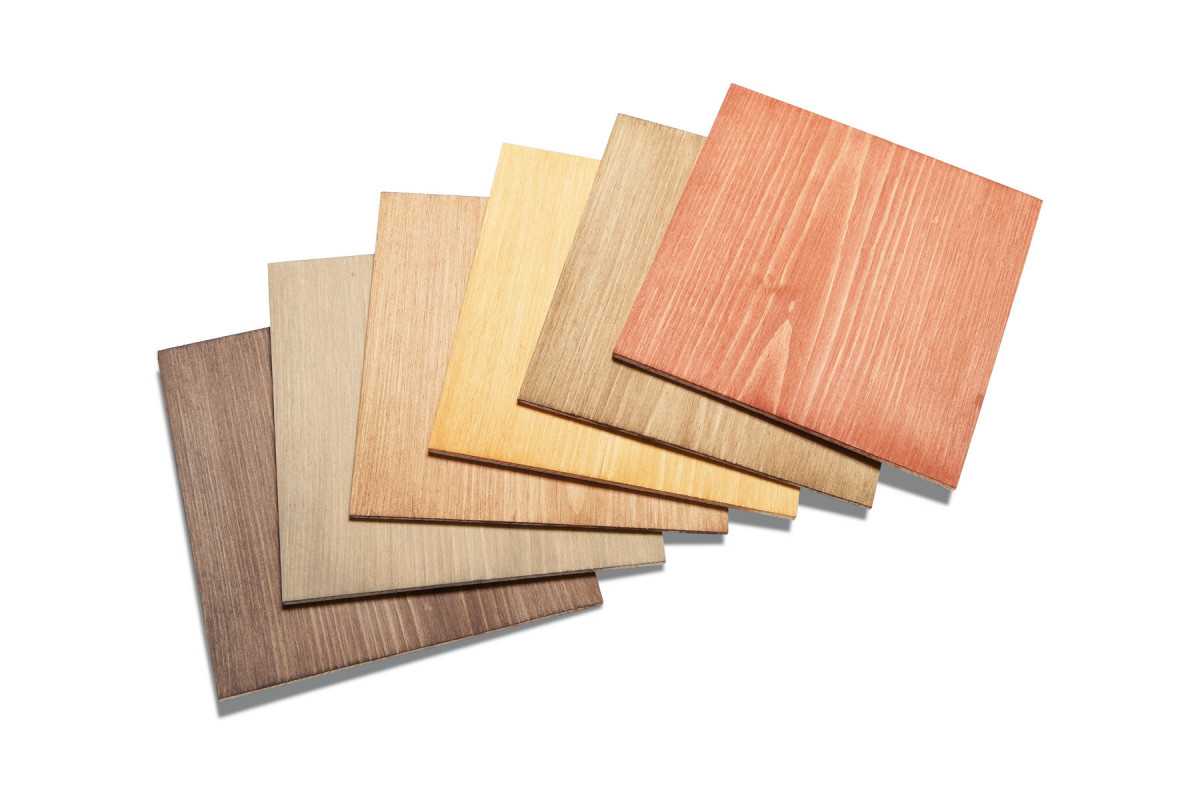
Pigmented exterior oil finishes come in a wide array of colors.
Second, most exterior oil finishes contain an additive to prevent mildew (called “mildewcide;” check the label). Mildew causes unfinished outdoor wood to turn blotchy, especially in humid climates or in shaded, windprotected areas that are slow to dry out. Mildew is mainly a surface problem, but it makes wood look dirty and it will rub off onto clothing.
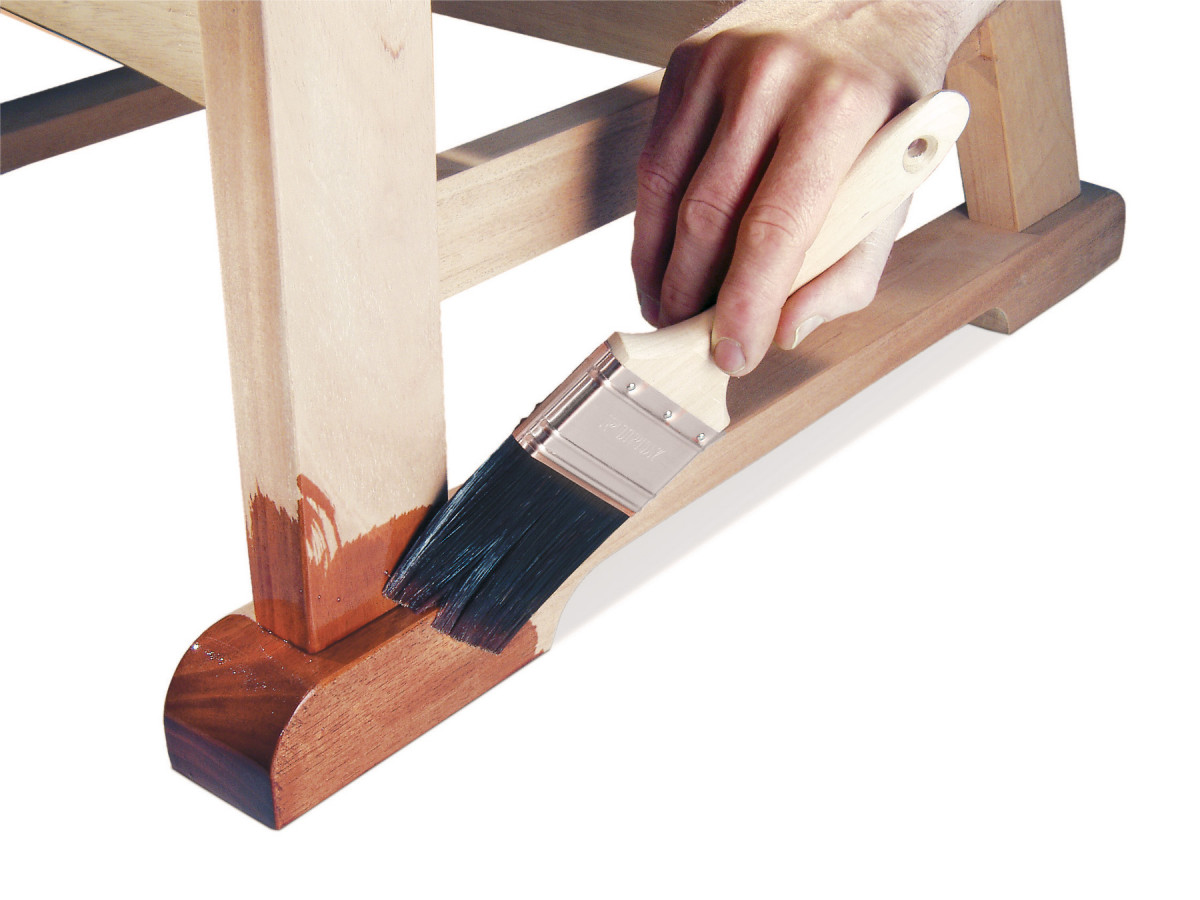
Apply exterior oil finish with a brush or spray. Thoroughly saturate the surface and then brush out or rag off any finish that remains.
Third, most exterior oil finishes contain additives that keep outdoor wood from turning gray by blocking the sun’s ultraviolet light. The sun’s ultraviolet light is the culprit that grays wood. UV-blocking additives also protect the finish itself from degradation. Generally, UV resistance increases with the amount of pigment an exterior oil finish contains; in other words, the more opaque the finish, the better its UV resistance. That’s why paint is the ultimate in UV protection. Tip: Who says you can’t have your cake and eat it too? If you like the gray, weathered look, choose a gray pigmented oil finish. Then you’ll still get the other benefits of having a finish on your outdoor wood.
Revitalize Gray Weathered Wood
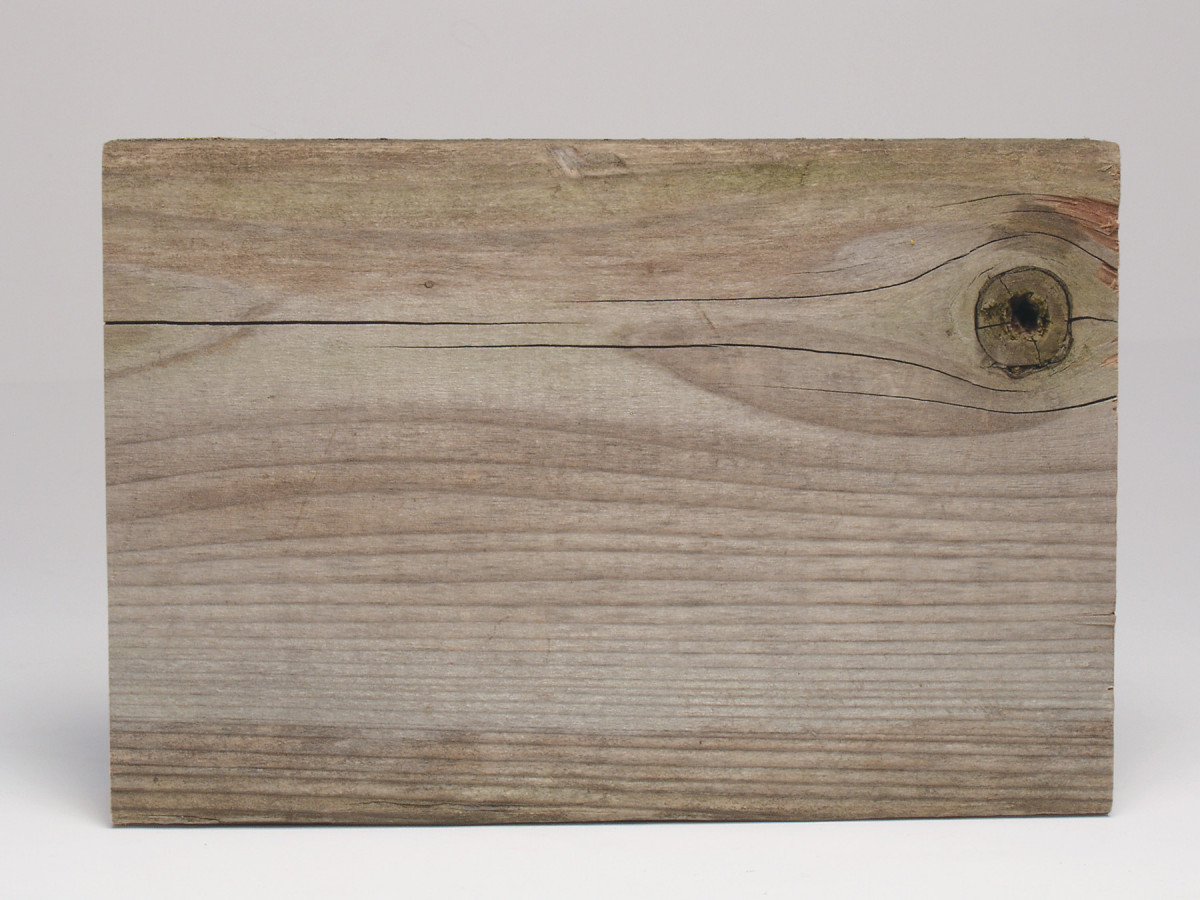
Weathered and gray, his redwood board has gone through many seasons without being finished.
If your furniture has turned gray or dull, you can restore its natural beauty by using a wood cleaner before you stain.
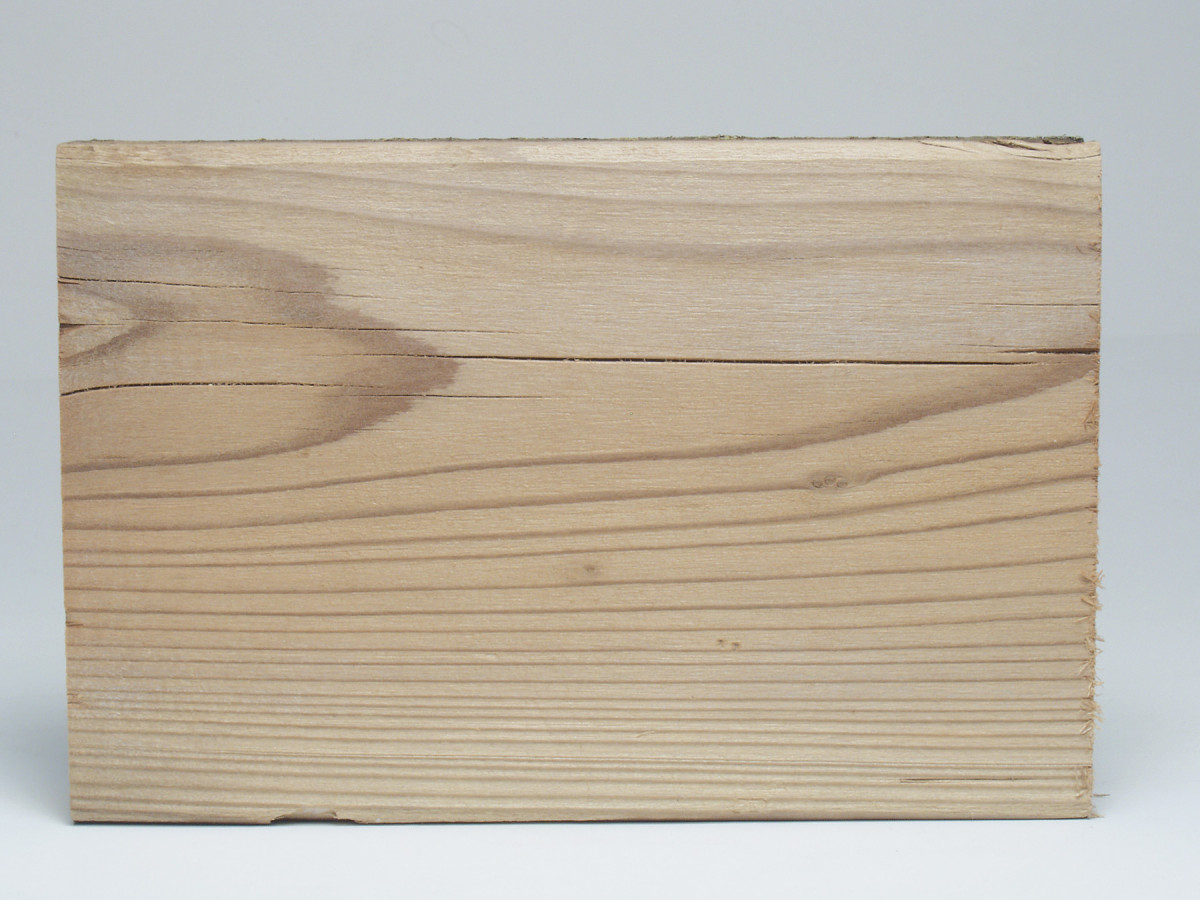
Cleaned and brightened, this section of the board appears much lighter.
Wood cleaners are often called “deck cleaners.” They’re available at most paint stores and home centers.
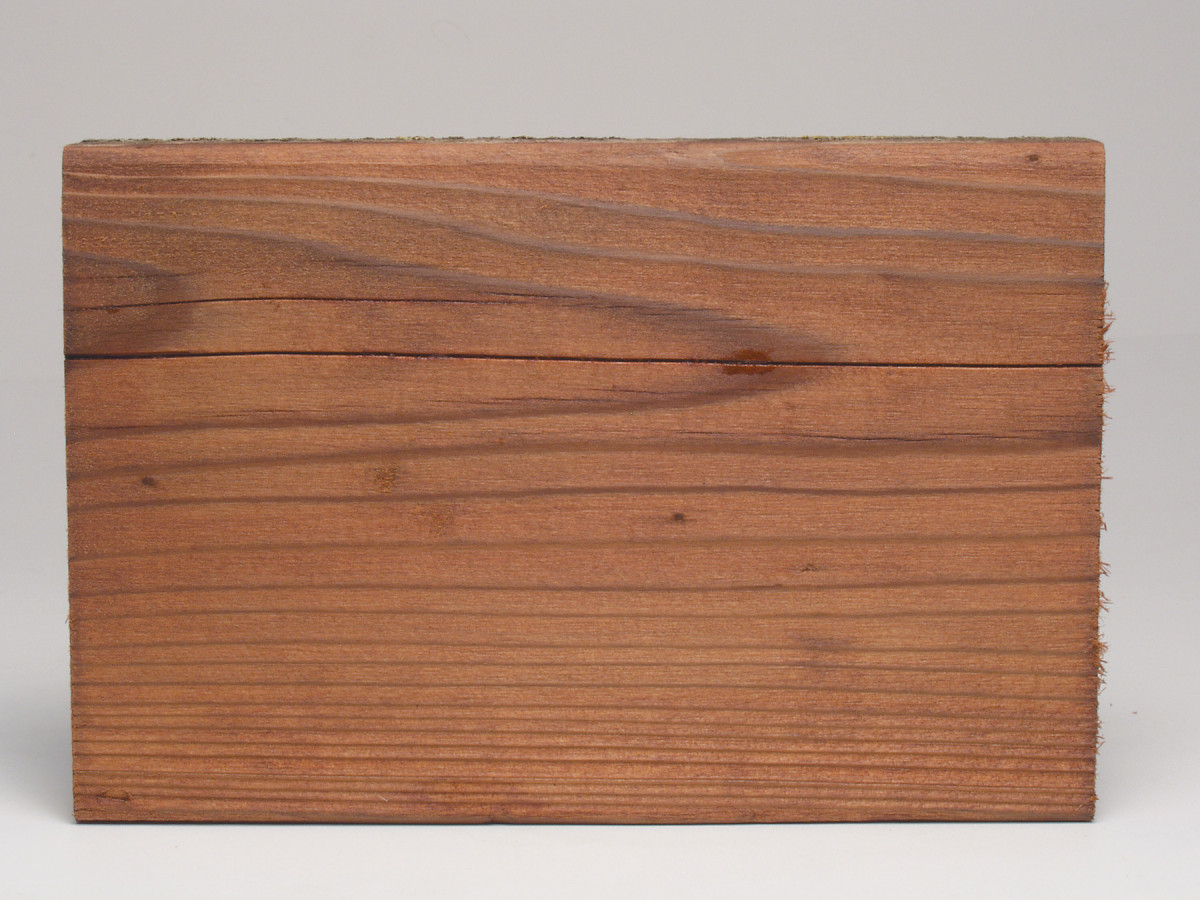
Finished with pigmented exterior oil, this section of the board looks brand-new.
Apply the cleaner with a brush or sprayer and let it soak awhile. Then scrub briskly and hose it off. When the wood is thoroughly dry, it’s ready for a fresh coat of finish.
Show the Grain
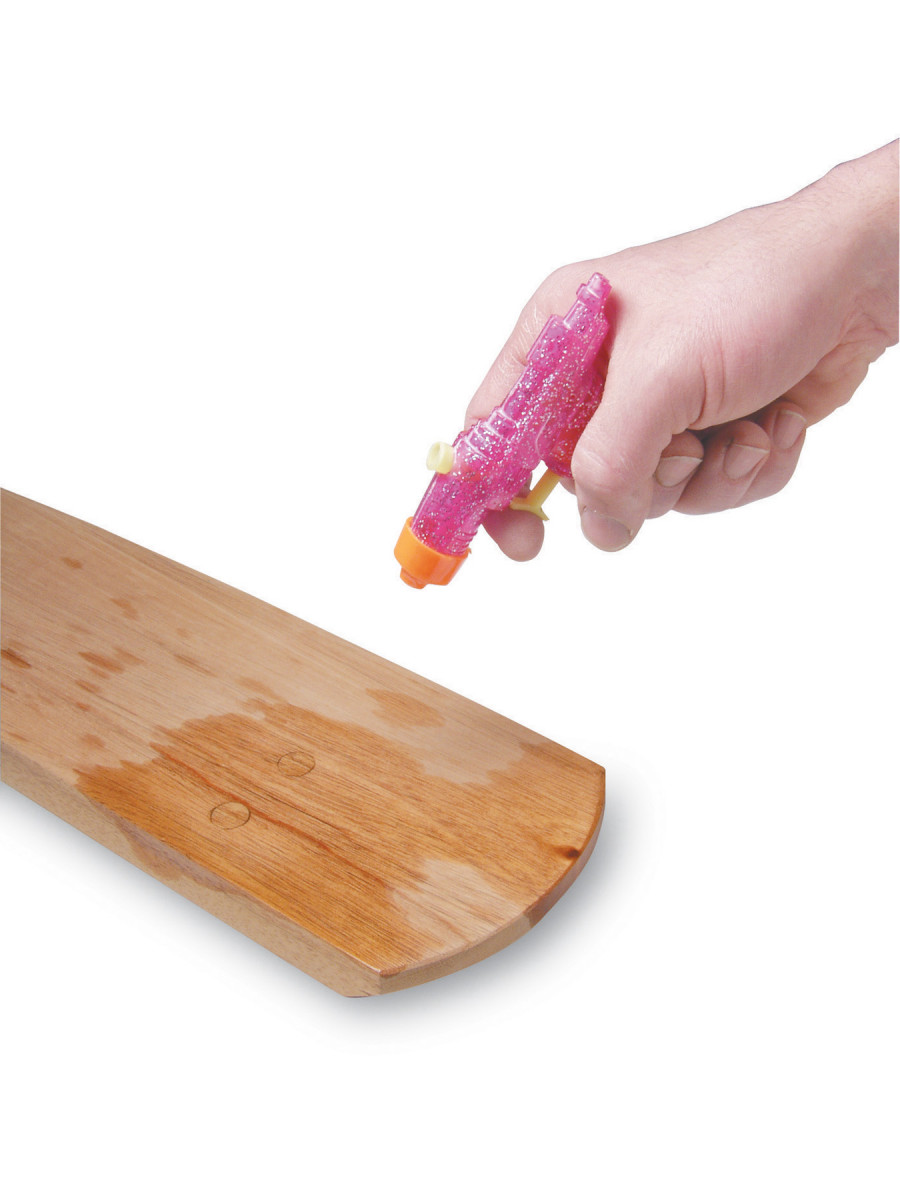
A simple test determines the condition of an exterior oil finish. If the water soaks in, it’s time to recoat.
You have several choices if you want the wood’s grain to show. Exterior oil finishes are available as clear oil or with pigments added. Clear finishes are actually amber-colored, because of the oil they contain—they give the wood a rich oiled look Pigmented oil finishes add color to the wood. They’re generally available in three formulations, toned (or transparent), semi-transparent or opaque, depending on the amount of pigment they contain.
As you can probably guess, there’s a tradeoff between an exterior oil finish’s clarity and its longevity: longevity increases—and clarity decreases— according to the amount of pigment a stain contains.
Soak, Then Wipe
The best way to apply an exterior oil finish is with a brush; you can also use a hand-pump-style sprayer (available at garden stores and home centers for about $10). Saturate the surface with finish and keep it wet until the oil stops being absorbed. This process can take from five minutes to half an hour, depending on the type of wood and the brand of finish. Some brands recommend two or more coats. Pay special attention to the end grain, as it will absorb more finish than face grain. Brush out or rag off any oil that remains on the surface of the wood to avoid sticky, shiny spots.
Maintenance is Mandatory
Knowing when to re-apply an exterior oil finish is the key to keeping outdoor wood looking good. If you wait until the finish breaks down, the wood will turn gray and cracks, checks and mildew may appear. Fortunately, there’s an easy way to tell when it’s time to recoat. It’s called the splash test. You simply splash some water onto your furniture. If it soaks into the wood, it’s time to recoat.
Most clear exterior oil finishes are warranted by the manufacturer to last a couple years. However, a clear oil finish that’s constantly exposed to intense sunlight will likely need to be renewed more often. Semi-transparent oil finishes may be warranted up to 5 years; opaque finishes are usually warranted even longer.
Outdoor furniture will accumulate a layer of dirt and grime over time, so hose it down and scrub it a bit prior to recoating. Let the wood dry thoroughly before applying the fresh coat of finish.
User-Friendly Oil Finishes
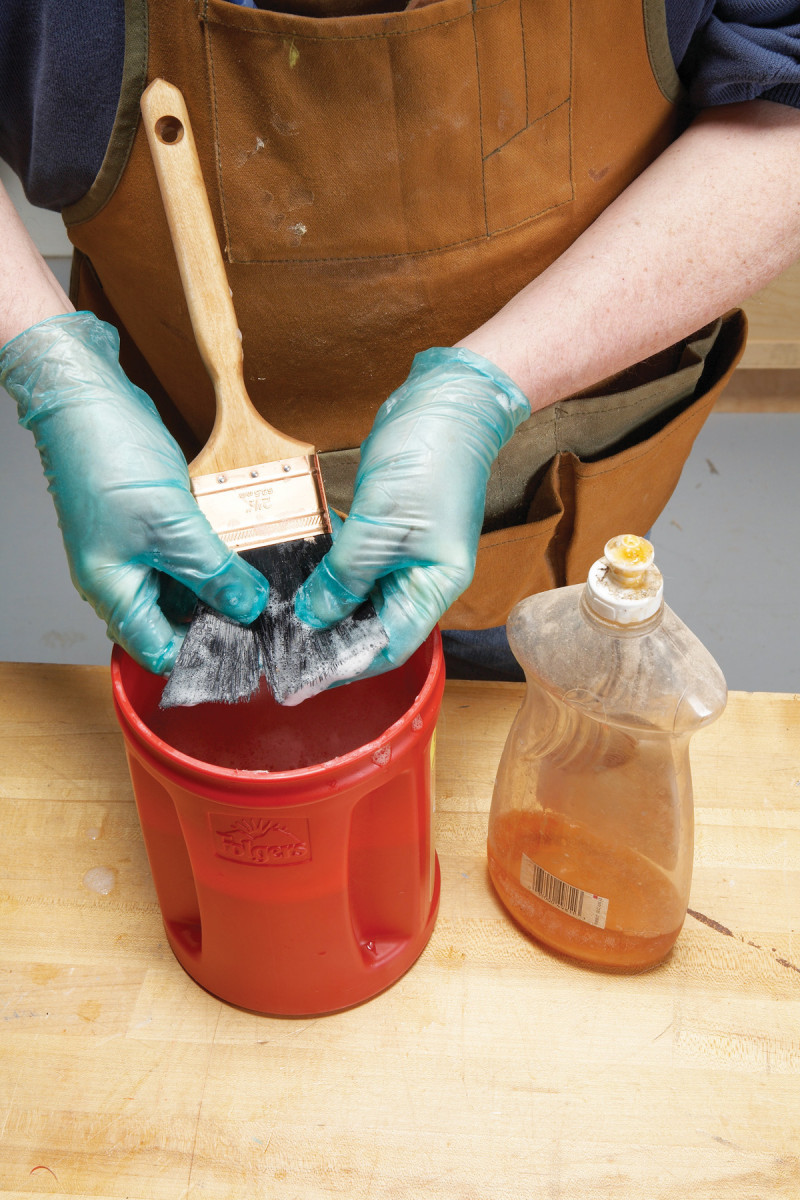
New “hybrid” exterior oil finishes last longer than traditional linseed or alkyd oil finishes, according to the manufacturers, and allow soap-andwater cleanup to boot. Instead of simply being dissolved in solvent, the penetrating oil molecules in these finishes are coated with acrylic resins and carried in a water-based formulation. As a result, these finishes contain fewer volatile organic compounds (VOC) than traditional oil finishes, and their “acrylic-oil” chemistry provides superior longevity.
Here are some supplies and tools we find essential in our everyday work around the shop. We may receive a commission from sales referred by our links; however, we have carefully selected these products for their usefulness and quality.








